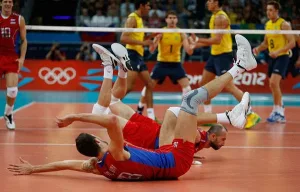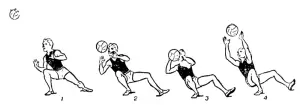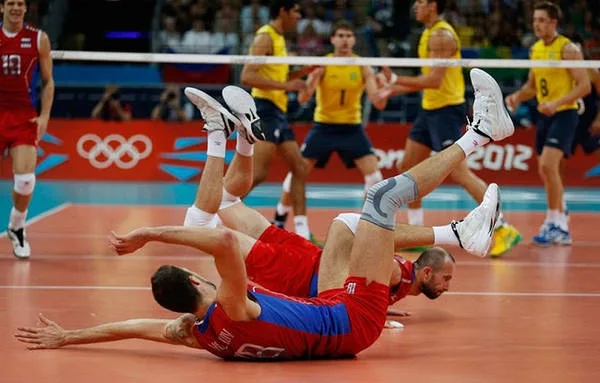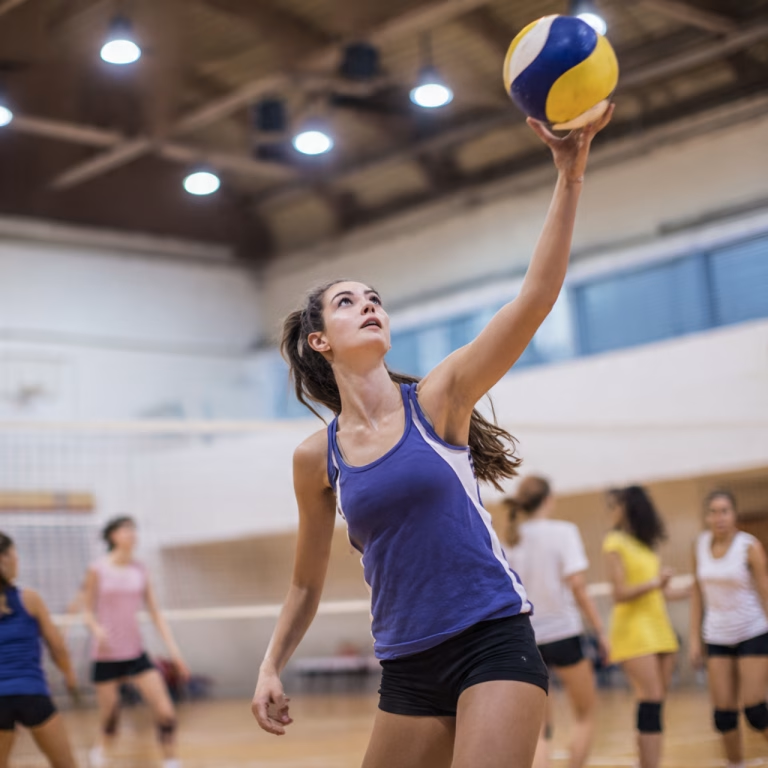Discover how to fall in volleyball: Falls in volleyball and basketball are a leading cause of injuries. Falling on hard surfaces can result in damage to the hands, knees, elbows, and shoulder joints.
Falls occur when the ball is critically close to the floor and there is no other opportunity to receive it, or they can be accidental, with a higher chance of injury due to lack of preparation.
Proper falling technique is essential not only for indoor volleyball but also for beach volleyball, despite the sand’s cushioning effect.
How to Fall in Volleyball: Techniques for Falling to Receive the Ball

Falling Forward (on the Chest)

This technique is used to save a ball dangerously close to the ground. The hands act as shock absorbers: the player hits the ball, then supports their body weight on outstretched arms, lands on the chest, and finally brings down the legs.
This wave-like motion allows for a soft landing. Avoid putting elbows forward and keep feet off the floor to prevent them from going under the body.
From a chest-lying position, it is convenient to hit the ball almost immediately after it lands by extending a palm between the floor and the ball, causing the ball to bounce off the hand and not be counted as having hit the ground.
See Also: How to Spike Volleyball with Power
Falling to the Side (Rolling Over)

Depending on the player’s position, a roll to the left or right can return the ball to the play zone. In zone 1, the ball is returned from the sideline with the right hand; in zone 5, with the left hand. During the fall, the player fully extends the arm (usually the top one) and rolls over their shoulder, reducing fall speed and impact force.
Accidental Falls
When colliding with another player, a volleyball player might fall. This often results in falling backward, though falls can also occur from shocks behind, forcing the player to the floor. In the former case, rolling onto the back can slow the fall and reduce impact. In the latter, a chest fall is advisable.
Inexperienced players often injure their hands and fingers by putting a straight arm out in front. It’s better to bend the arm at an angle that allows for a roll to the side.
Slipping can occur due to inappropriate footwear. Volleyball shoes provide firm grip and lateral foot support, improving balance. Wrist and ankle protection can also help reduce injury risk for inexperienced players.
How to fall in volleyball: Practicing falling techniques
Proper falling technique requires practice. Each skill must be trained until it becomes automatic, enabling timely reactions during a game.
Warm-Up
A thorough warm-up is essential before training; jogging, squats, and arm swings help warm up the muscles.
Initial Practice
Begin on soft surfaces like sand. Once skills improve, transition to harder surfaces. Start from a low crouching position, as close to the ground as possible. Extend an arm to the side and perform a slow somersault. Gradually increase speed as confidence and proficiency grow.
Chest Falls
Practice chest falls from a squat position, extending arms forward and making a wave-like motion with the body, keeping feet off the floor.
Strengthening Exercises
Push-ups develop arm strength, allowing them to bear more body weight and soften the impact.
By consistently practicing these techniques, players can enhance their ability to fall correctly and safely in volleyball, reducing the risk of injury and improving overall performance on the court.




